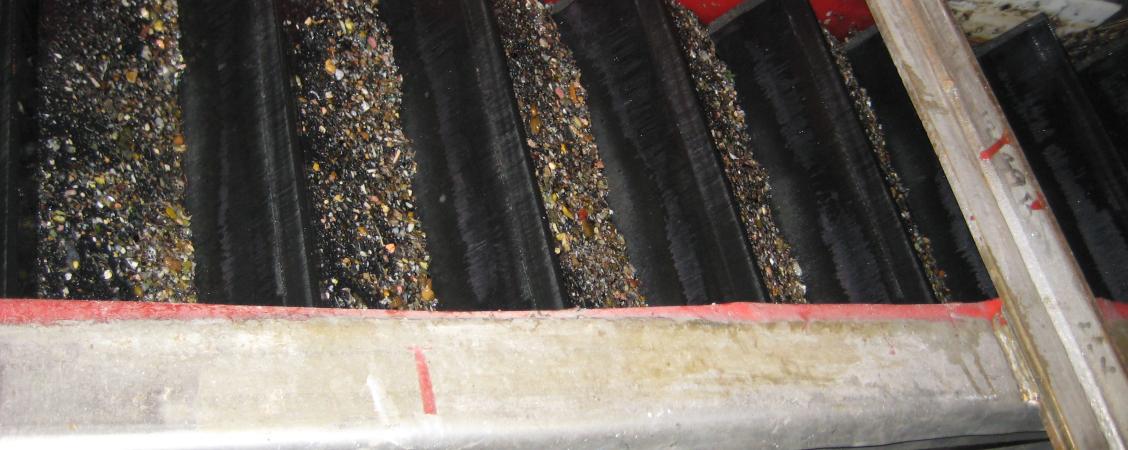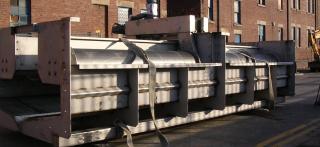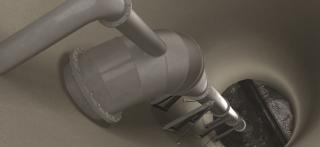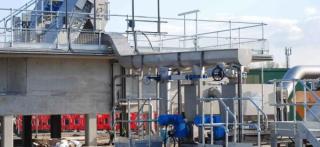
HeadCell Based Grit System Knocks Out Odors From Grit for This NASCAR Town
An aging / ineffective chain and bucket grit system was causing unacceptable odor issues that were leaving visitors with unfavorable impressions of the community.
Situation
Newton, Iowa is a town of 15,000 people located 30 miles (50 km) east of Des Moines. The former corporate headquarters of Maytag, Newton is an example of a Midwestern town that has thrived despite the loss of a major industrial employer. Since Maytag’s departure in 2006, Newton has reinvented itself through technology and commerce, establishing several wind energy factories, a biodiesel plant and a telecom center. It also is the proud home of the Iowa Speedway, which was built the same year Maytag left town.
Designed by NASCAR legend Rusty Wallace, the speedway has hosted several Indy Car and Nationwide series races through the 2009 season and is hopeful for a NASCAR race in the next few years. Tens of thousands of people drive to Newton each summer to visit the track and enjoy the races, located directly alongside the Interstate 80 (I-80) corridor.
Additionally, thousands drive I-80 as one of America’s major connectors, running from New York City to San Francisco. Before the track was built, passing motorists encountered a common problem driving through Newton – the odors from its wastewater treatment plant.
Problem
The Newton WWTP sits beside I-80, within plain sight – and smell – of the highway and less than two miles (3.2 km) from the Iowa Speedway. Before the track was built the activated sludge, 2.9 Mgal/d (11 MLD) average flow treatment plant was causing its share of problems.
Everyone that went by used to smell the facility,” said Plant Superintendent Bob Main. “It was a pretty nasty odor in your car.
While odor from the treatment plant is generally a combination of many factors, including screenings and grit, insufficient aeration and ineffective digestion, Main believes that decaying organics found in the plant’s grit were one of the main causes for the smell.
A lot of (the odor) was associated with the screenings and the grit,” Main said. “It was an equal partner.
Main and his team decided that the plant needed an upgraded grit removal system in 2001. Previously, the plant contained a bucket elevator system from the mid-1980s, which had its chains, buckets and rails rebuilt several times since installation.
In addition to the wear and tear, the old system was having trouble removing and washing fine grit which increased the organics output with the grit, adding to the plant’s odorous reputation. The plant’s inability to remove fine grit was also harming plant equipment downstream, clogging the primary clarifiers and anaerobic digesters.
Solution
Once Main decided to upgrade, he considered his options with engineer Keith Hobson at FOX Engineering in 2003. Hobson preferred a HeadCell® based grit removal system from Hydro International, due to its superior performance and ability to integrate with the plant’s existing equipment. Hobson had utilized the technology in an upgrade at another plant in the region with excellent success.
In his 2003 recommendation to Main, Mr. Hobson spoke of one of the products, “they are more effective than other grit removal technologies and remove more fine grit particles than other units.”
In 2004, Main traveled across the state to a treatment plant in Council Bluffs, where he viewed the HeadCell® stacked tray vortex grit removal system first hand. In addition to the increased efficiency of the Hydro offering, Main was particularly impressed with the minimal amount of equipment within the process flow.
Grit chambers are terrible environments,” said Main. “When you have to work on them, it’s nasty work. We wanted to do whatever we could to minimize that.
Main made the decision to upgrade his grit removal system with Hydro equipment, and construction began in 2007. Hobson was also able to design the equipment to retrofit into the existing grit basin. Hobson’s design enabled the plant to continue running during the upgrade, keeping one basin in operation while equipment was installed in the other. The system installed contains two HeadCell® grit separators, two SlurryCup™ grit-washing units and one Grit Snail® dewatering escalator.
At Newton, Iowa, screened influent flows to the HeadCell® grit chamber, where grit is separated. The concentrated grit slurry captured in the bottom of the HeadCell® is then pumped to the SlurryCup™, where the organics are washed away and sent back to the process. The concentrated grit is then directed into the Grit Snail®, which elevates the grit during dewatering and delivers it into a 2 yd3 (1.5 m3) trailer.
The HeadCell® grit concentrator removes grit as small as 75 μm with minimal headloss. The high-efficiency flow distribution header evenly distributes influent over multiple stacked conical trays. Tangential feed establishes a vortex flow pattern where solids settle into a boundary layer on each tray, and are swept down to the center underflow collection chamber. These settled solids are continuously pumped to a SlurryCup™ washing and classification system and delivered to a Grit Snail® dewatering system.
“We found that the new grit removal system works well on snails as well," said Main. "Our trickling filter recycle used to go in the discharge end of the grit chambers. 1 or 2 times a year we get a huge dump of snails. When we did the upgrade, we changed our discharge point to upstream of the new grit system. The next morning the system had removed so many snails, you couldn’t even find the trailer. It was stacked.
In addition to increased efficiency and the ability to remove snails, perhaps the system’s biggest benefit was reducing the plant’s infamous odor.
I don’t notice it anymore,” said Main. “The odors from the grit removal system are much, much better than they used to be. We have had people that have looked at the facility, when they walk in they are amazed at how fresh it is now. That makes me feel like we’ve done something right.

























